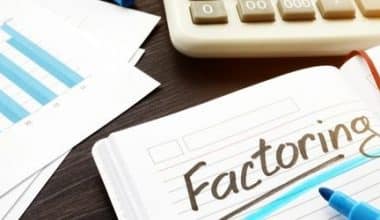Running a business involves expenses like total variable cost, marginal cost, average total, and variable cost. A business can use the total cost formula to collect the overall cost of a business and hence, check its profitability. By understanding how to calculate these costs, you can make sure your business is as profitable as possible. In this article, we describe these costs along with their nature, the significance of finding them for your company, and where to look for them. In addition, we offer illustrations of how a business might compute these costs using the total cost formula
The Average Total Cost Formula
The average cost is calculated by dividing the total cost of production by the volume of output produced. This figure is also referred to as the unit cost or average total cost. Simply put, it assesses the amount of money a company must spend on each unit or item of output produced. Using a straightforward equation, you can find the ATC:
Average Total Cost = Total Cost of Production / Quantity of Units Produced.
The average cost includes fixed costs, such as production costs that apply regardless of output and are necessary for production. Variable costs are included in the average cost as well.
How to Calculate the Average Cost
#1. Calculate the Fixed Cost of Production
A fixed cost can be anything from insurance premiums to setup fees to normal profits to depreciation to rent costs to selling costs to loan payments and more.
#2. Calculate the Variable Cost of Production.
Things like raw materials, production-related manufacturing labor, packaging, and more are some examples of the variable cost of production.
#3. Add Together the Total Fixed and Variable Costs.
Using these summaries, you can add the total fixed and total variable costs to determine the average total cost of production.
#4. Calculate the Number of Units Produced.
When you get to this stage, you’re prepared to figure out how many units were produced. This number can be located by consulting invoices, consulting your accounting department, or contacting the business that made the units.
#5. Calculate the Average Total Cost of Production
Discovering the average production cost as a whole is now possible. Divide the total cost of production (calculated in step three) by the number of units produced (learned in step four) to determine this cost. The following average cost formula will help you do this:
Average Total Cost = Total Cost of Production / Quantity of Units Produced
Total Variable Cost Formula
Total Variable Cost is the aggregate of all variable costs that fluctuate with output or unit production. To determine it, multiply the quantity produced by the variable cost per unit.
Total variable costs for a business are the outlays that fluctuate concerning overall production over a specific time frame. These expenses are directly related to how much a company produces, and they may go up or down as a result.
Packaging, production-related raw materials, manufacturing labor, and additional costs directly related to production, such as employee wages, are examples of variable costs.
- Sales commissions
- Package charges
- Shipping fees
- Transaction costs
- Materials for production
How to Calculate Total Variable Cost
The cost to produce one unit of your product multiplied by the number of products you have created will give you the total variable cost. It is possible to use this formula to determine the total variable cost for a specific period.
Total output quantity x variable cost of each output unit = total variable cost
You can use the following steps to determine the total variable cost:
- Find out what each variable cost is for producing a single unit of the product.
- The total variable cost for one unit of production is the sum of all costs that are variable and necessary to produce that unit.
- Multiply the variable costs for one unit of a product by the total number of units produced. You can calculate the total variable cost by adding these calculations together.
Importance of Total Variable Cost?
First, when making decisions, understanding which of your costs are variable and which are fixed is crucial. For instance, if your business is strapped for cash, knowing which costs must be covered regardless of what can help you plan how to handle variable costs more effectively.
On the other hand, being aware of the variable costs gives you the ability to reduce them when necessary by lowering production. It allows businesses to calculate their break-even analysis. It also enables companies to identify areas where they can cut production-related input costs. total variable storm offers a foundation for figuring out a company’s profit projections. Investors can evaluate how a business responds to various operating circumstances thanks to it.
Example
Johnson & Johnson Company is trying to figure out how much it will cost to make 1000 of its products overall. The business first calculates its variable cost per unit for every product produced before calculating the total variable cost. They get the following numbers:
Costs of direct materials per unit: $15
Costs of direct labor per unit: $30
Cost of overhead per unit: $12
The variable costs to produce one unit is $15 + $30 + $12 = $57. In other words, the business must spend $57 to produce one item. A business can use the formula below to calculate the total variable cost the business will incur to produce 1000 units of a product:
Total output quantity x variable cost of each output unit = total variable cost.
The formula is as follows for this illustration: 1000 x 57 = $57,000. The total variable cost needed to produce 1000 units is therefore $57,000.
Example 2
The following variable cost per unit is related to a production facility that creates Bread
Cost of Direct Labor: $35
Direct Material – $55
Variable Expenses: $42
There were 100 units produced in total. You must determine how much bread will cost overall.
Solution
100 x ( 35 + 55 + 42)
= 100 x 132
=$13,200
Total Cost Formula With Marginal Cost
The marginal cost is an indicator of the additional expenses a business incurs when producing more units of a good or service. One can calculate it by dividing the overall change in the cost of producing more goods by the overall change in the number of goods produced.
The marginal cost is the difference in overall production costs by creating or producing one extra unit. By dividing the variation in total production costs by the variation in total quantity, you can determine the marginal cost.
The following is the Marginal Cost Formula:
Marginal Cost = (Change in Costs) / (Change in Quantity)
What Is “Change in Total Costs”?
Costs of production may go up or down at each stage of the production process and for a given time, particularly when there is a need to produce more or less output. There will be a change in the overall production cost if producing extra units necessitates hiring one or two extra workers and raises the cost of raw materials.
Simply subtract the production costs incurred during the initial output run from the production costs in the subsequent batch after output has increased to calculate the change in costs. For instance, a business’s current production might cost $500,00. Expenses would change by $150,000 ($650,000 – $500,000) if management increased production and costs rose to $650,000.
What is “Change in Quantity”?
The output volume will unavoidably rise or fall as production levels change. The quantities involved are usually significant enough to evaluate changes in cost. The quantity of goods produced in the first production run is subtracted from the amount of output produced in the subsequent production run to calculate the changes in quantity.
Importance of Marginal Cost in Business Operations?
Earnings will still exceed the additional cost if a product’s selling price exceeds its marginal cost, which is a good justification for continuing production. However, if the price is below the marginal cost, losses will result, so additional production should be avoided – or perhaps prices should be raised.
By producing at a level where marginal cost (MC) and marginal revenue (MR) is equal, a business can maximize its profits. Knowing a company’s marginal cost and marginal revenue for different product lines allows it to focus resources on areas where there is the biggest difference. It can concentrate on producing individual units that maximize returns rather than investing in products that are only marginally successful.
What Is the Formula for Total Costs?
Simple fixed costs plus variable costs equal total cost is the formula to determine this. Adding up variable and fixed costs will give you the total cost.
What Is the Total Cost Method?
A business can take into account all revenues and costs relating to cost allocation for the total cost method on an accrual basis. Internal activities and modifications to the semi-finished and finished products currently in stock are not considered for this purpose.
You can use an income statement in the total cost method. In other words, you can use the units of measurement a business generates to accrue income and expenses. The units of measurement produced during the review period are used to determine how much money was made and spent.
Why Do We Calculate the Total Cost?
A business can calculate the total cost by adding fixed and variable costs.
TC =FC+VC
What Is Your Total Cost?
the total cost a company incurs to produce a specific level of output. The total cost is the sum of all the costs a business incurs to produce a particular level of output.
How Do You Calculate the Total Cost per Unit?
The amount of money a business uses to produce each unit of the product it sells is the total cost per unit. A business can calculate its cost per unit as follows:
(Total fixed costs + Total variable costs) / Total units produced.
Conclusion
Any prices below ATC will result in a loss of money, so understanding ATC is crucial when choosing prices. Knowing the significance of average cost will also enable you to comprehend how it functions over an extended time.
Related Articles
- Marginal Cost: Meaning, Formulas & How to Calculate, Simplified!!!
- Total Cost: Definition, Formula, How to Calculate It & Free Tips
- FIXED COST: Meaning, Examples, Formula, & How to Calculate
- TOTAL GROSS INCOME: What It Is, Calculation & Guide
- TOTAL COST OF OWNERSHIP (TCO): Definition and How It Work
- BREAK EVEN POINT: Meaning, Example & Calculation






